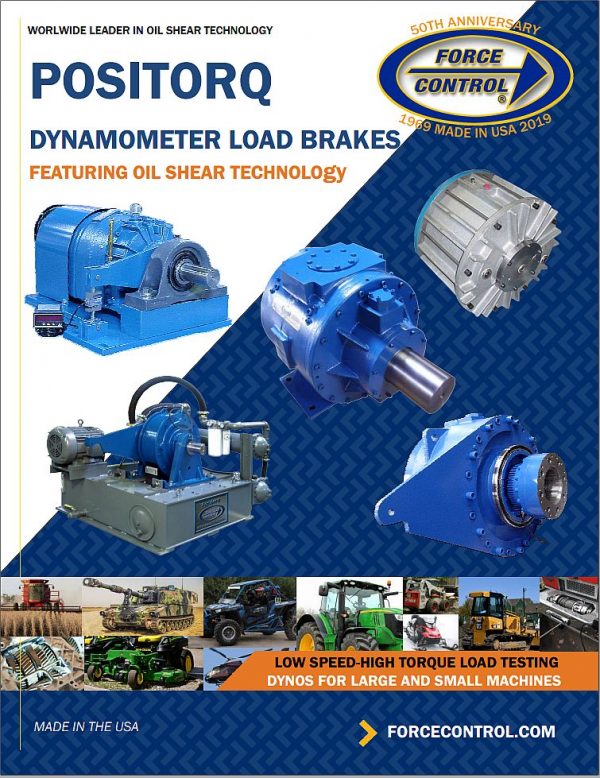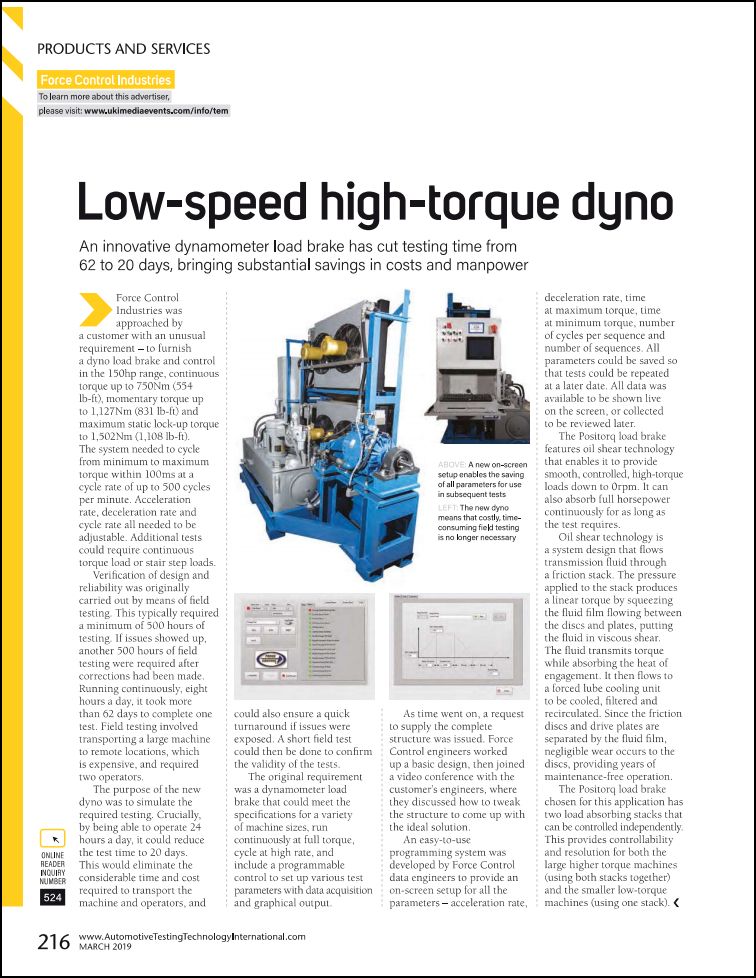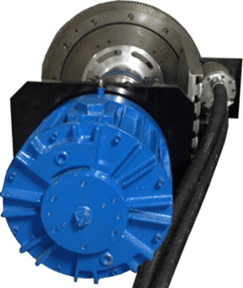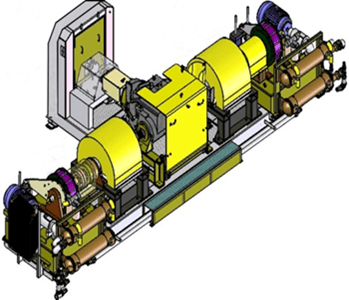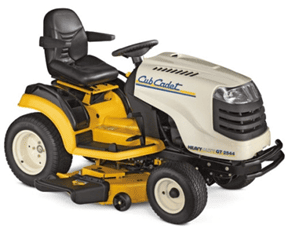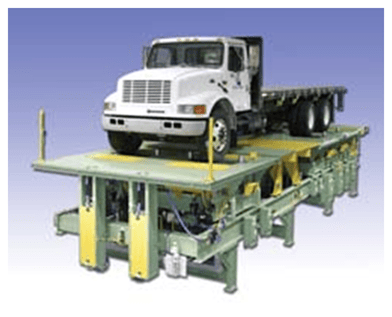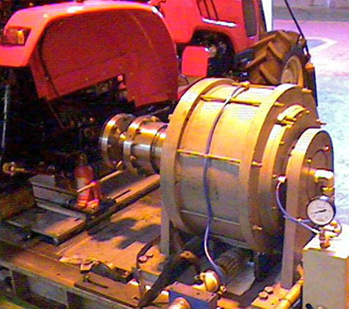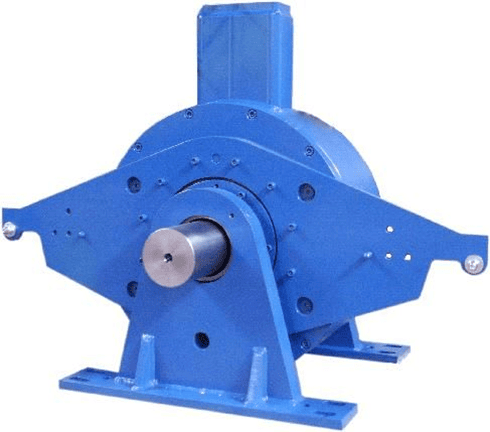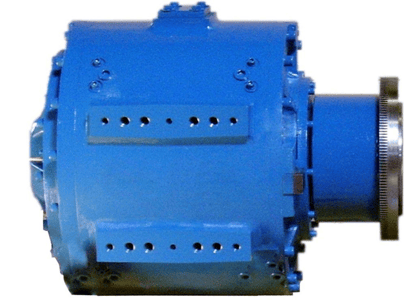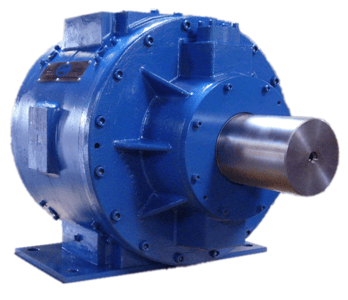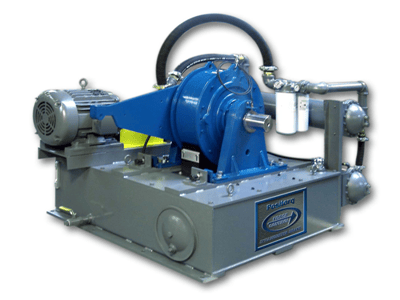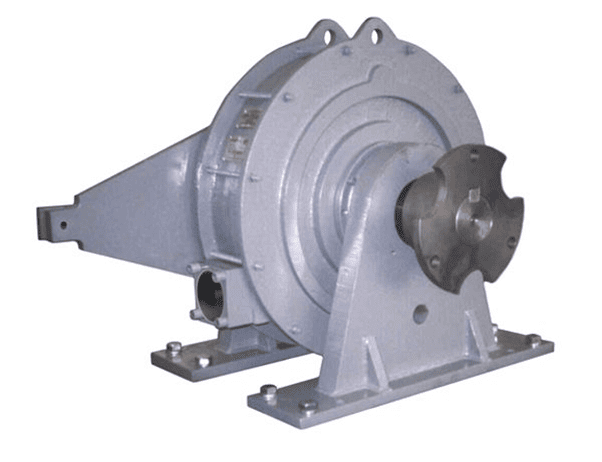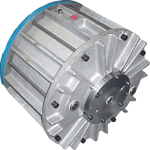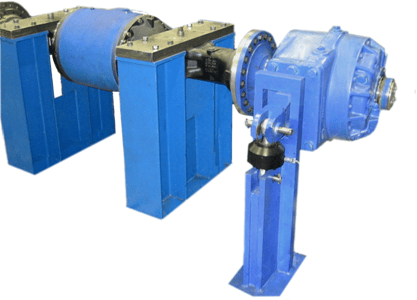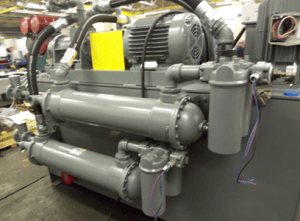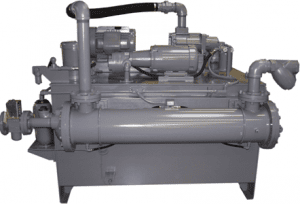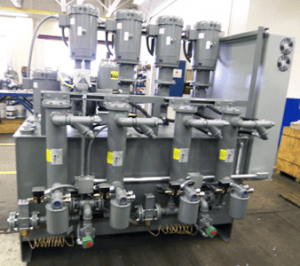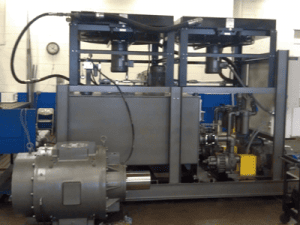Types of Positorq Load Brakes
The Positorq Load Brakes come in many different shapes, sizes, and mountings. Some are foot mounted, some foot mounted in bearings using a torque arm to measure torque. Others may be shaft mounted, or flange mounted utilizing a torque arm. Fortunately there are many designs that may fit your application, or we will make a new design. Below are some of the current arrangements.
Positorq brake applications typically include two major components – the brake connected to the load and a Forced Lube Cooling Unit. The brake is a multiple disc hydroviscous brake featuring Oil Shear Technology developed and refined by Force Control Industries, Inc. starting in 1969. The multiple disc brake stack is actuated by applying a clamping pressure to the stack through a piston. The actuation medium can be pneumatic or hydraulic, hydraulic being more controllable with quicker response. Changing the actuation pressure changes the torque transmitted proportionally.
Because this is a compact design with low inertia rotating components there is little surface area to dissipate thermal energy from the continuous slip load. For that reason we utilize a separate free standing forced lube cooling unit to pump transmission fluid through the brake returning it to be cooled and filtered and returned to the brake.
There are many variations of forced lube cooling units however the basic requirements include the following:
Main Fluid Pump – typically a positive displacement screw pump. This provides positive fluid flow under all conditions, and operates quietly with maximum life expectancy. Small gear pumps are used on some of the smaller systems but can be noisy.
Heat Exchangers – are used to remove the heat from the fluid. Typically either oil-to-air or oil-to-water are utilized. Oil-to-water is most efficient however requires large quantities or water, or local cooling tower.
Oil-to-air is becoming most common today as it is environmentally friendly, requires no water or coolant additives, and is readily available. The downside is on particularly high thermal systems they can become quite large and noisy.
Filters – are used to clean the fluid of carbon particles produced by heating the fluid, and impurities getting into the system. Commonly used are screw on filters for quick change out and low cost. Strainers are also included in the tank to catch larger particles.
Pressure Switch – is used to monitor the fluid pressure going into the brake. It is typically wired to the prime mover to stop the operation with a loss of pressure meaning fluid is not flowing to the brake.

